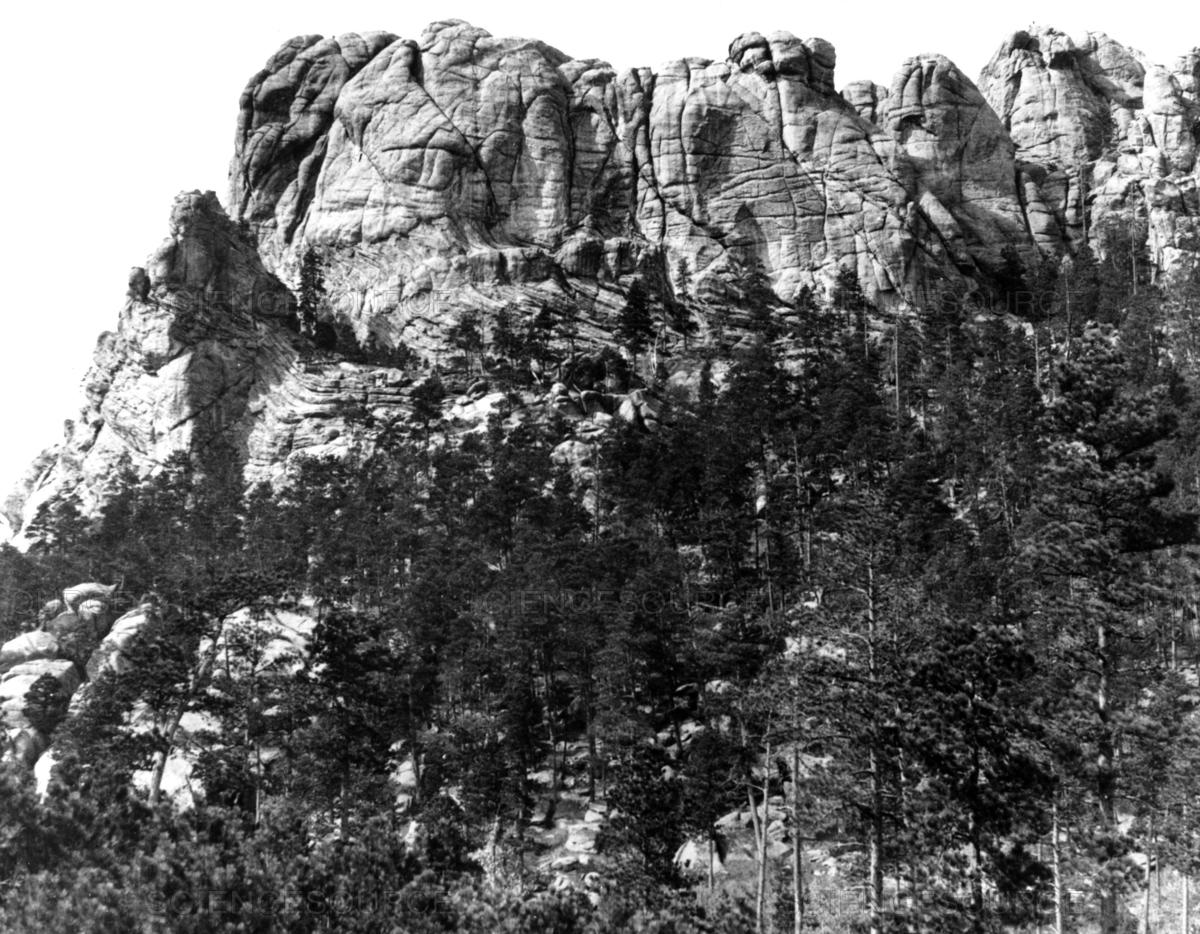I don't really recall the first time I became aware of Mount Rushmore. I was quite young, I'm sure, and I'm equally sure that, at that young age, I probably concluded that I would never step upon its hallowed ground.
Yet that's just what I've done.
After the disappointing stop at the Crazy Horse Memorial, I had higher hopes for Mount Rushmore. After paying my $11.00 (for an annual parking pass and admission, thankyouverymuch), I parked the truck in a covered parking garage and began to make my way in.
It was crowded, but not offensively so. As you'd suspect, my biggest concern was getting photos and, in the end, I'm happy with what I was able to come away with. The lighting wasn't perfect, as I got there as the sun was starting to come in over George's right shoulder, but I was able to work with it.
Now, most people are aware of the four Presidents whose faces are carved into the granite of Mount Rushmore, but not nearly as many know why those four were selected.
- George Washington - Signifies the struggle for independence and the birth of the Republic.
- Thomas Jefferson - Signifies the territorial expansion of the country.
- Abraham Lincoln - Represents the permenant union of the States and equality for all citizens.
- Theodore Roosevelt - Stands for the 20th century role of the United States in world affairs.
There's an enormous visitor center, and there's no shortage of information on the mountain, who designed or the men who carved it, from raw granite, right into the face of the mountain. If you only have a couple of hours, it's unlikely that you'll see everything or read everything. The amount of information is almost overwhelming:
And, if you happen to get hungry while you're there, there's a full service, cafeteria style restaurant. I didn't eat there, but the smell was tempting me. Not your typical snack bar fare at this joint:
Walking towards the mountain, it's easy to get a sense of reverence for this place. No one died here, and no one is buried here. But there's a reverence for what Mount Rushmore stands for and, like I said, you sense that as you approach it through the columns of flags:
The walk around Mount Rushmore (well, in front of it; you can't walk around it) is known as Presidential Trail. While a more appropriate name would probably be difficult to imagine, it's important to note that "Presidents" aren't the only things you'll see. These are the Black Hills, after all, and many different species of wildlife call this area "home":
After a few moments on the trail, you get to the base of the monument, and that quintessential view of Mount Rushmore:
 |
| Another view of Mount Rushmore... |
The monument was sculpted by Gutzon Borglum and his son Lincoln, but it was the brainchild of South Dakota historian Doane Robinson. Gutzon Borglum was recruited from his work on Stone Mountain, in Georgia. His original design was somewhat different than what we see today, in that Jefferson's likeness was originally planned to be on Washington's right. The rock there was deemed too unstable, though, so it was place to Washington's left.
A little known fact is that the original plans for the monument called for each President to be depicted from the waist up:
The actual carving that we see today took a total of 14 years. During that time, surprisingly, there were only minor injuries. Not a single life was lost.
In 1939, Borglum built a "Sculptor's Studio" not far from the mountain. It was here where he, and other sculptors, could work on various scale models of the project. Gutzon Borglum died in March of 1941, and his son Lincoln assumed the helm of the project. A funding shortage brought the project to a close, however, in October of that year.
Inside the Sculptor's Studio are a number of scale sculptures used by Borglum and his crew of about 400 men:
It's difficult to imagine what it would take to pull of something like this today. Borglum had to travel from Stone Mountain, Georgia to the Black Hills of South Dakota. Today, he could be there the same day. In the early 1900's, though, it would take weeks to make the trip. In order to meet with someone else to help secure more funding would take a trip of several more weeks. Today such a meeting could take place on Skype and the funds would be in place by the next business day.
In short, nothing that Gutzon Borglum had to do, with regards to the carving of this monument, was done easily. It was a Herculian task from beginning to end. We take much for granted these days, and I have to wonder if anyone alive today would have the wherewithal to even conceive of such a project, much less carry it out.
Mount Rushmore stands as a monument to not only the Presidents depicted and what they've represented to our country, but to the men who are responsible for us now being able to enjoy such a place. It's not necessarily a place of quiet reflection, nor is it one for solemn introspection. As I see it, it's a monument to the very ideals which have made it possible for this little experiment called "America" to endure.
And for this we have but one man to thank: Gutzon Borglum...
 |
| Gutzon Borglum. This bust was carved by his son Lincoln... |













No comments:
Post a Comment